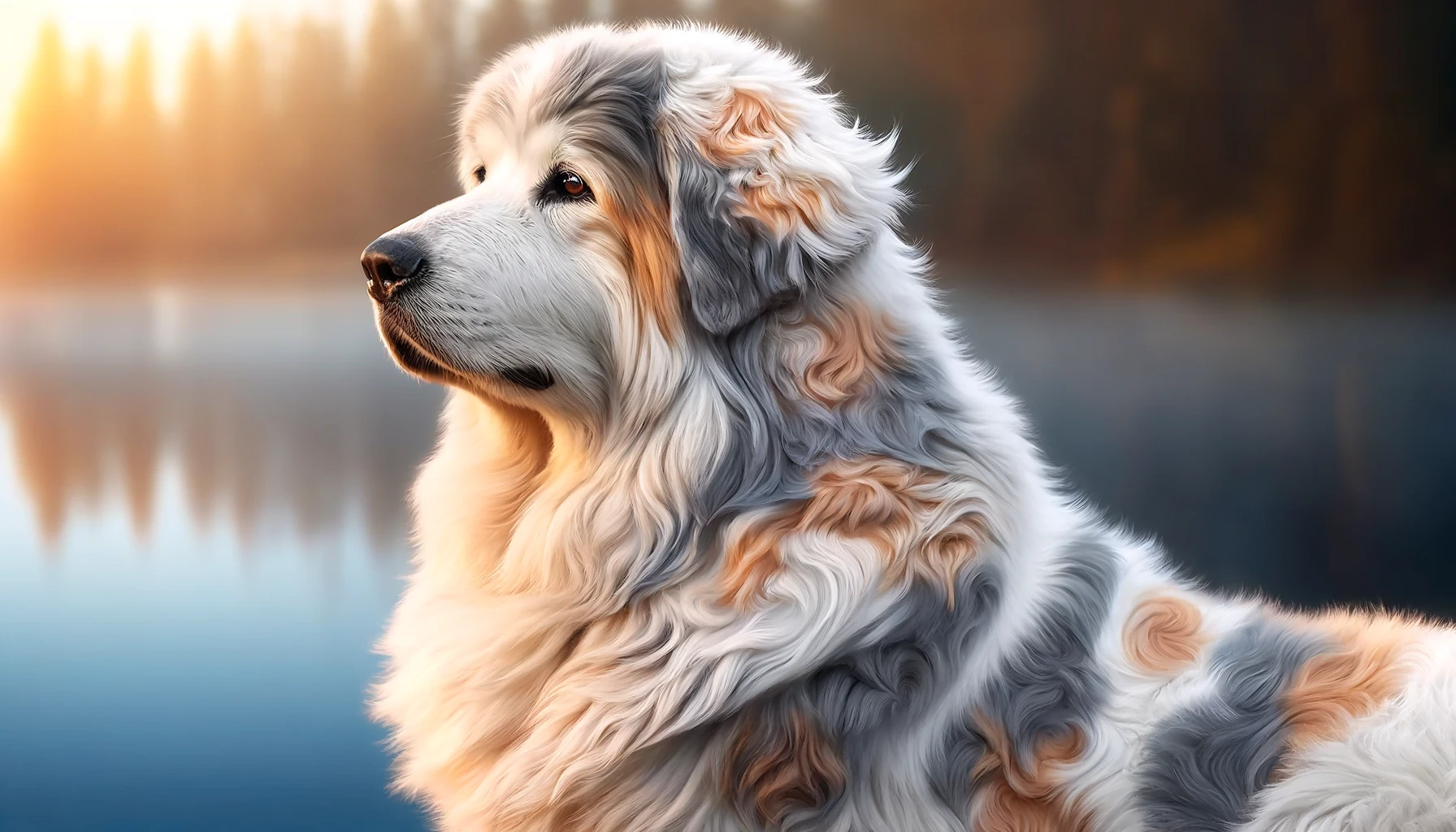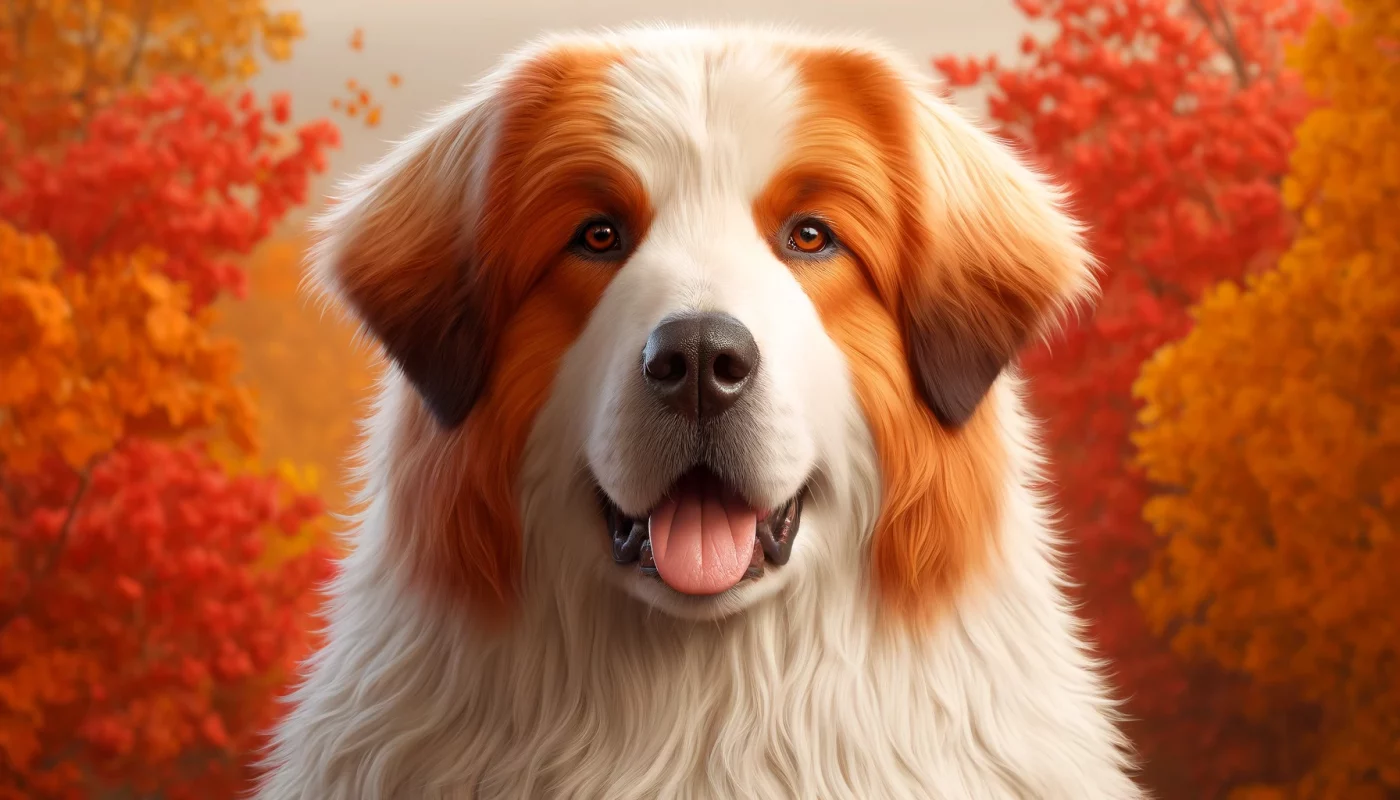
The Great Pyrenees is a majestic breed, revered not only for its impressive size and protective instincts but also for its striking and varied coat colors. Originally bred to guard livestock in the harsh Pyrenees mountains, their coat is designed to protect them from the elements, but it also comes in several beautiful variations that enhance their noble appearance. This breed’s standard coat color is primarily white, which historically helped them blend into snowy landscapes. However, many Great Pyrenees exhibit markings in shades that range from gray to reddish-brown. In this article, we will explore seven stunning color variations of the Great Pyrenees, each bringing a unique aesthetic appeal to this already remarkable breed.
1. Pure White

The most iconic and prevalent color of the Great Pyrenees is pure white. This pristine coloration reflects the breed’s historical use as a flock guardian, where they needed to blend into the snowy mountains to watch over sheep. A pure white Pyrenees boasts a thick, double-layer coat that is both luxurious and functional, providing insulation and camouflage. This striking white coat can sometimes exhibit a slight shimmer in the sunlight, adding to the breed’s ethereal and majestic presence.
2. Badger

Badger refers to a pattern where the white base coat is adorned with a mix of gray, tan, black, or reddish markings. These markings are most commonly found on the head, ears, and tail, and can range from subtle to pronounced. The badger pattern is particularly cherished for its rustic and rugged appearance, which stands out against the dog’s white fur. These markings may fade as the dog grows older, making each puppy’s evolution in appearance a unique journey.
3. Gray

Gray-coated Great Pyrenees are a less common but equally stunning variation. These dogs feature a primarily white coat with significant gray shading that can cover parts of the body and most of the face. The gray shade can vary from light silver to a deep charcoal, adding a sophisticated and somber tone to their overall look. This variation highlights the breed’s solemn and contemplative nature, making them look wise beyond their years.
4. Tan

Tan markings on a Great Pyrenees can appear over the ears, back, tail, and sometimes as smaller spots across the body. This coloration adds a warm contrast to the predominantly white coat, giving the dog a distinctive and eye-catching appearance. Tan markings can range from a light cream to a rich golden color, which can enhance the dog’s expressions and overall visibility.
5. Reddish Brown

A more rare and deeply pigmented variation is the reddish-brown marked Great Pyrenees. These dogs may have large patches of rich, reddish-brown fur, often around the face and ears, which can extend to other parts of the body. This striking coloration adds a bold and regal flair to the breed, highlighting their noble profile and strong stature.
6. Blended Shades

Some Great Pyrenees exhibit a beautiful blend of white with shades of gray and tan, creating a marbled or mottled effect. This variation is particularly unique to each dog, with no two patterns being exactly alike. These blended shades can give the Great Pyrenees a soft, almost ethereal look, which is quite different from the more defined patterns seen in other variations.
7. Black and White

Though rare, black and white Great Pyrenees are visually striking. The stark contrast between deep black and pure white provides a dramatic and elegant appearance that is hard to miss. This variation often features solid black patches over the ears, eyes, and sometimes on the body, set against the white background of the rest of the coat.
In conclusion, the Great Pyrenees is a breed that offers more than just a protective presence and a friendly demeanor; it also presents a variety of stunning coat colors that add to its visual appeal. Whether pure white or adorned with shades of gray, tan, or black, each color variation brings out a different facet of this breed’s majestic beauty. Owners and breeders alike treasure the Great Pyrenees not only for their dependable nature but also for their diverse and beautiful appearances, making this breed a popular choice for those who appreciate both aesthetics and functionality in their canine companions.
Frequently Asked Questions About German Shepherd Colors
1. What are the standard coat colors of the Great Pyrenees?
The standard coat colors of the Great Pyrenees include white, which is the most common, and shades that may have markings of gray, red (tan), or badger. These markings typically appear on the ears, head, tail, and body in various intensities and patterns. The white color often predominates, with the other colors adding unique accents. This breed is known for its majestic and beautiful coat, which serves both aesthetic and functional purposes, providing camouflage in snowy environments.
2. Can Great Pyrenees have completely black coats?
No, Great Pyrenees do not have completely black coats. The breed standard specifies that the base color of their fur should be primarily white with possible markings of gray, tan, or badger. If a Great Pyrenees appears to have a predominantly black coat, it may be a mix or could potentially be misidentified as a different breed. Their genetic makeup does not support a fully black coat.
3. What causes the variations in Great Pyrenees coat colors?
Variations in Great Pyrenees coat colors are primarily caused by genetics. The genes inherited from the dog’s parents determine the coat color, including the presence and distribution of markings. Environmental factors do not typically influence coat color, although the intensity and visibility of markings can change slightly with age. The variety of coat colors and patterns adds to the breed’s unique appearance.
4. How common are Great Pyrenees with badger markings?
Badger markings are relatively common among Great Pyrenees. These markings are characterized by a mix of gray, black, and tan colors, usually appearing on the face, ears, back, and tail. Badger markings can vary significantly in pattern and intensity, ranging from faint to very pronounced. They may fade as the dog grows older, often turning into lighter shades.
5. Do Great Pyrenees puppies change color as they grow?
Yes, Great Pyrenees puppies can change color as they grow. Puppies might be born with darker markings that often lighten or change as they mature. This color change is mostly noticeable in puppies with badger, gray, or tan markings. By the time they reach adulthood, their coat color usually stabilizes, but it can still have slight variations over time.
6. What is the rarest coat color in Great Pyrenees?
The rarest coat color in Great Pyrenees is a completely white coat with no markings at all. While most of the breed will have some sort of marking, those that are completely white are quite rare. These dogs are highly prized for their striking appearance, which closely aligns with the historical look of the breed used in snowy mountainous terrains.
7. Are there any health issues associated with certain Great Pyrenees colors?
There are no specific health issues directly linked to the different coat colors of Great Pyrenees. However, as with many other breeds, color-linked genetic conditions can occur, such as deafness associated with white coat colors in some breeds. It’s always important to maintain regular veterinary check-ups regardless of coat color.
8. How does the Great Pyrenees’ coat color affect its grooming needs?
The Great Pyrenees’ coat color does not significantly affect its grooming needs. Regardless of the coat color, they require regular grooming to maintain their double coat. This includes regular brushing to prevent matting and manage shedding, as well as occasional baths to keep the coat clean and healthy. Attention should be given more to the breed’s grooming requirements rather than the color.
9. Can the color of a Great Pyrenees’ coat predict its temperament?
No, the color of a Great Pyrenees’ coat does not predict its temperament. Temperament is influenced by a variety of factors including genetics, upbringing, and training, rather than coat color. Great Pyrenees are generally known for their calm, protective, and loyal nature, traits that are consistent across all coat colors.
10. How do environmental factors influence the appearance of a Great Pyrenees’ coat color?
Environmental factors such as sun exposure can slightly influence the appearance of a Great Pyrenees’ coat color, primarily through the lightening of the fur. Extended time spent outdoors can cause the coat, especially darker markings, to bleach slightly. However, the base coat color determined by genetics remains largely unchanged. Regular grooming can help maintain the natural color and health of the coat, reducing the impact of environmental factors.





